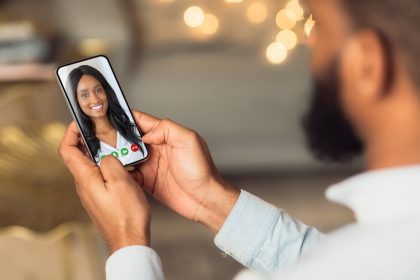Are you constantly finding yourself in the just friends category with potential romantic interests? The problem might not be them—it could be you. Self-sabotage in relationships is real, and many of us don’t even realize we’re doing it. Here’s how to recognize if you’re the one putting yourself in the friend zone and what to do about it.
The invisible friend zone
You’ve been there before. That moment when you realize someone sees you as nothing more than a buddy, a pal, a confidant—everything except a romantic possibility. But what if the person placing you in that category is actually… you?
Self-friend-zoning is a common but rarely discussed phenomenon where individuals unconsciously limit their romantic potential through behavior patterns, communication styles, and self-perception. The result? A frustrating cycle of almost-relationships and missed connections.
The good news is that once you recognize these patterns, you can break them. Let’s dive into the seven most common ways people friend-zone themselves and explore strategies to step into your full romantic potential.
You’re mentally rejecting yourself first
The preemptive strike. One of the most powerful forms of self-sabotage happens entirely in your head. You see someone attractive across the room and immediately think they wouldn’t be interested in someone like you. Maybe you decide they only date a certain type—taller, more athletic, more accomplished—and remove yourself from the possibility pool before even saying hello.
This internal rejection creates a self-fulfilling prophecy. When you approach someone with the energy of just friends, that’s exactly what you’ll become. Your body language, tone, and conversation choices all subtly communicate that you’ve already categorized yourself as a non-romantic option.
Breaking this pattern requires a mindset shift. Challenge those automatic thoughts with counter-evidence. Remember times when someone surprised you with their interest. Consider that attraction is complex and subjective—what one person finds appealing might be very different from what others want.
Your verbal cues scream friend material
Words matter. Pay attention to how you describe yourself in conversations. Do you constantly refer to yourself as always the friend or tell stories that position you as the supportive sidekick rather than the protagonist of your own romantic narrative?
These verbal cues don’t just affect how others see you—they reinforce your own self-perception. Each time you verbalize being just a friend, you strengthen neural pathways that make this identity more fixed in your mind.
Try shifting your language. When discussing relationships, avoid self-deprecating jokes about your perpetual friend status. Instead, speak confidently about what you want and value in romantic connections. This doesn’t mean forcing flirtation or being inauthentic—simply allowing the possibility of romance to exist in your conversations.
You’re hiding your authentic self
The protection paradox. Many people develop a friendship persona as protection against rejection. By presenting a sanitized, emotionally safe version of yourself, you minimize vulnerability but also eliminate the chemistry that sparks romantic interest.
This often manifests as excessive agreeableness, avoiding controversial topics, or masking passionate interests to seem more approachable. While these strategies might make you an excellent friend, they prevent others from experiencing the full spectrum of who you are—including the parts that might ignite attraction.
Authentic connection requires revealing your true self, including your opinions, passions, and occasional moments of intensity. This doesn’t mean being confrontational, but rather allowing your unique perspectives and energy to shine through in conversations.
Your appearance sends mixed signals
Style speaks volumes. While personal style should primarily be about self-expression, it’s worth considering whether your presentation aligns with your romantic goals. If you’re consistently dressing to blend into the background or choosing comfort over self-expression, you might be visually friend-zoning yourself.
This isn’t about conforming to conventional standards of attractiveness. Rather, it’s about intentionally cultivating a personal style that makes you feel confident and accurately expresses who you are. When you dress in ways that make you feel powerful and authentic, that confidence becomes magnetic.
Experiment with elements that help you feel more aligned with your romantic self. This might mean incorporating colors that energize you, choosing more tailored fits, or simply putting more thought into your appearance for social situations where you might meet potential partners.
You’re everyone’s relationship consultant
The perpetual advisor. If your friends constantly come to you for relationship advice while never considering you as a romantic possibility themselves, you might have inadvertently positioned yourself as the dating guru rather than a dating prospect.
While being a good listener is valuable, becoming everyone’s relationship therapist can inadvertently remove you from consideration as a romantic partner. People begin to see you through the lens of the role you’ve established—wise counselor rather than potential date.
Create some balance by occasionally sharing your own dating experiences and desires. When appropriate, remind friends that you’re also looking for connection. Consider setting gentle boundaries around how often you provide relationship advice, especially when it prevents you from focusing on your own romantic life.
Your boundaries are actually walls
Protection versus isolation. Healthy boundaries are essential in any relationship, but there’s a critical difference between boundaries and barriers. Boundaries protect your well-being while still allowing connection; barriers prevent any meaningful intimacy from developing.
Signs you might be building walls include: avoiding eye contact during personal conversations, changing the subject when discussions turn emotional, using humor to deflect sincere compliments, or maintaining physical distance even in situations where casual touch would be natural.
True connection requires allowing yourself to be seen. Practice maintaining eye contact for a few seconds longer than feels comfortable. Share something slightly vulnerable and notice how it deepens conversations. When someone offers a compliment, practice simply saying thank you instead of deflecting.
You’re not signaling romantic availability
The invisible candidate. If no one knows you’re interested in dating, how can they consider you? Many people keep their romantic desires completely private out of fear of rejection or judgment, effectively removing themselves from consideration.
Making yourself romantically visible doesn’t require dramatic declarations. Simple signals like mentioning that you’re open to meeting someone special, joining dating apps, or asking friends if they know anyone you might connect with can significantly expand your opportunities.
Remember that romantic relationships rarely materialize from thin air—they require some level of intention and clear communication of interest. By explicitly acknowledging your desire for connection, you invite possibility into your life.
Breaking free from self-sabotage
Understanding these patterns is the first step toward change. Self-awareness allows you to catch yourself in moments of self-sabotage and make different choices. Start small—choose one pattern to focus on changing and practice new behaviors consistently.
Remember that rewiring these habits takes time. Be patient with yourself and celebrate progress, no matter how incremental. Each time you choose vulnerability over safety, authenticity over people-pleasing, or possibility over predetermined rejection, you create new neural pathways that make romantic connections more likely.
The friend zone isn’t a prison sentence—especially when you’re the one who built it. By recognizing how you might be limiting yourself and taking consistent action to expand your self-concept, you open the door to new possibilities and connections that might have been there all along, just waiting for you to see them.
Taking action toward authentic connections
Small steps, big impact. Changing entrenched patterns doesn’t happen overnight, but even minor adjustments can yield significant results. Begin by noticing your self-talk in social situations. When you catch yourself mentally removing yourself from the dating pool, pause and challenge that assumption.
Practice expressing genuine interest in others. Ask thoughtful questions that go beyond surface-level conversation. When someone shares something meaningful, respond with authentic curiosity rather than immediately shifting to advice-giving mode.
Pay attention to your body language as well. Are you physically positioning yourself as approachable or creating distance? Simple adjustments like maintaining open posture, making appropriate eye contact, and orienting your body toward the person you’re speaking with can dramatically change how others perceive your interest level.
Embracing the possibility of rejection
Vulnerability as strength. At the core of self-friend-zoning lies fear—fear of rejection, judgment, or loss. By preemptively categorizing yourself as just a friend, you create a safety net that protects you from these painful experiences.
However, growth happens outside your comfort zone. Each time you allow yourself to be vulnerable—by expressing interest, showing your authentic self, or acknowledging your desire for connection—you build emotional resilience. Paradoxically, becoming comfortable with the possibility of rejection actually makes rejection less devastating.
Remember that romantic compatibility is inherently selective. Not everyone will be a match, and that’s not a reflection of your worth. By remaining open to both connection and rejection, you create space for genuinely compatible relationships to develop.
Creating a new narrative
Rewriting your story. The stories we tell ourselves shape our reality. If your internal narrative casts you as the perpetual friend, it’s time for a rewrite. Begin noticing situations where you automatically assume a friendship role and consider alternative possibilities.
Experiment with seeing yourself as romantically desirable. Notice evidence that supports this perspective—times when others have expressed interest, qualities you possess that partners value, moments when you’ve felt confident in your appeal.
This isn’t about developing an inflated ego but rather about challenging unnecessarily limiting beliefs. By expanding your self-concept to include romantic potential, you open yourself to experiences that might have seemed impossible under your previous narrative.
Remember that breaking free from self-friend-zoning isn’t about manipulating others or changing your essential nature. It’s about removing self-imposed barriers that prevent authentic connection. When you show up fully as yourself—with all your passions, opinions, vulnerabilities, and desires—you create the conditions for meaningful relationships to flourish, whatever form they might take.














